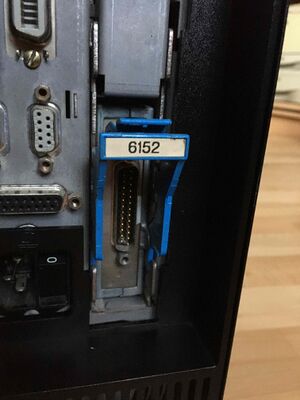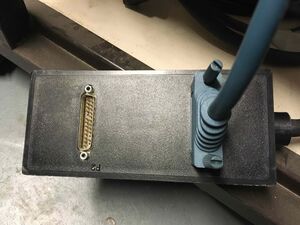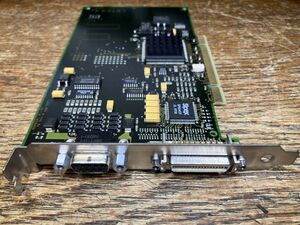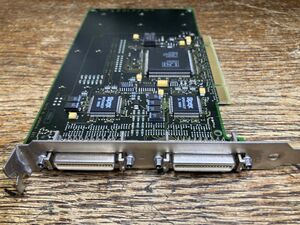User:PoC/Serial networking scenarios with-Cisco-routers: Difference between revisions
(→Weblinks: More links) |
(→Weblinks: more precise) |
||
| Line 111: | Line 111: | ||
* [https://www.cisco.com/c/en/us/td/docs/ios/bridging/configuration/guide/15SY/br_15_sy_book/br_overview_brdg.html Bridging and IBM Networking Configuration Guide], Cisco IOS Release 15SY | * [https://www.cisco.com/c/en/us/td/docs/ios/bridging/configuration/guide/15SY/br_15_sy_book/br_overview_brdg.html Bridging and IBM Networking Configuration Guide], Cisco IOS Release 15SY | ||
* [https://website.fis.agh.edu.pl/complab/doc/Cisco_IOS_11.0/cbook/cx25.htm Configuring X.25 and LAPB] on Cisco IOS, Faculty of Physics and Applied Computer Science Poland<ref>Very old documentation linked intentionally. Note: The configuration option ''tunnel'' was renamed to ''xot'' in newer IOS releases.</ref> | * [https://website.fis.agh.edu.pl/complab/doc/Cisco_IOS_11.0/cbook/cx25.htm Configuring X.25 and LAPB] on Cisco IOS, Faculty of Physics and Applied Computer Science Poland<ref>Very old documentation linked intentionally. Note: The configuration option ''tunnel'' was renamed to ''xot'' in newer IOS releases.</ref> | ||
* [https://public.dhe.ibm.com/systems/power/docs/systemi/v6r1/en_US/sc415405.pdf X.25 Network Support] | * [https://public.dhe.ibm.com/systems/power/docs/systemi/v6r1/en_US/sc415405.pdf X.25 Network Support] for OS/400, IBM.com | ||
== Footnotes == | == Footnotes == | ||
Revision as of 20:43, 20 October 2025
| This article isn't finished yet or needs to be revised. Please keep in mind that thus it may be incomplete.
Reason: Just raw sketch |
Sometimes, older, donated hardware comes without LAN I/O-adapters. Sometimes it has serial, synchronous capable communication I/O-adapters, though. This article shows several ways how to "network" AS/400 machines through these, with the help of (older) Cisco hard- and software, and points out pros and cons.
Note: This article is probably more about Cisco configuration than AS/400.
Cisco has provided a lot of configuration options to support different networking scenarios. Emphasis is to multiplex once separated IBM SNA and PC-/Workstation based traffic onto the same physical wiring. Expectably, huge cost savings for recurring bills resulted, because expensive leased lines could now be shared.
Decades later, the focus shifted from commercial applications to mainly hobbyist uses, with their own set of use cases.
Technologies exploited for the desired outcomes are:
- Remote Source Route Bridging (of Token Ring frames over Ethernet or even TCP = RSRB),
- Data Link Switching Plus (DLSw+), akin to RSRB but broader in scope,
- X.25 as transport protocol for higher-level protocols (SNA, IP),
- Local or remote media conversion between LANs and SDLC or QLLC (X.25).
Physical Layer Requirements
On the physical layer, some kind of serial connection is required. In earlier times, AS/400's often had an external modem, providing remote diagnostics capabilities through ECS (Electronic Customer Support), connected to a serial port. For the sake of simplicity, the AS/400 in question is assumed to already have a serial port, RS-232 style.
Note: DE-9 or DB-25 connectors directly screwed to the chassis are meant for diagnostics and UPS connection. These are not normal serial ports!
Matching IBM V.24 Modem Cables for your particular hardware can be sourced e. g. through shops on the internet.
Cable designations:
| Description | Length | Part Number | Feature Code |
|---|---|---|---|
| RS232 Cable DB-25F to DB-25M | 6.1 m | 22F0149 | #9022 |
| (Germany) | 22F0150 | ||
| (Japan) | 22F0151 | ||
| RS232 PCI Communications Cable Mini-Centronics to DB-25M | 44H7480 | #0348 | |
| (Germany) | 44H7482 | ||
| (Japan) | 44H7484 |
There are other serial connectivity options but these are very rare.
On the Cisco-side of affairs, just two things are necessary:
- Cisco 16xx, 25xx, 26xx or similar router model with T-Type serial interface (card),
- Cisco CAB-232 FC.
Note! It is of utmost importance to keep in mind that the AS/400 serial ports have sense pins, to know which kind of cable is attached. If you plug in an ordinary PC serial cable, and vary on the line description, you’ll eventually find the succinct message in the QSYSOPR message queue, that a cable could not be found. Therefore the requirement of an IBM V.24 Modem Cable, or a self made cable, or adapter, providing the necessary sense pin connectivity. For this reason, you'll need to plug the DB-25F socket connector of the Cisco cable to the modem cable, and not directly to the AS/400’s port.
It seems desirable to also provide means of Integration of serial only machinery into LANs. Cisco IOS provides functionality for such scenarios.
Software Requirements
Basically:
- Some flavor OS/400,
- Cisco IOS for your particular model with a certain feature set.
See the Cisco Feature Navigator weblink for additional information. Over a long time, Cisco has flooded the market with many different Cisco routers. They fall into broad generation groups, but there are still differences which model can (may) run which IOS feature set. Also, there is the definition of "officially supported" of "works", and the unofficial "works anyway in certain scenarios". Bottom line: The resulting combinations are way too many to be described here. A general rule of thumb: The bigger the image, and the more characters the classic feature set description has, the more likely it will have what you need.
Configuration preparations
Obtain the resource names of the serial ports.
On the AS/400 systems, type wrkhdwrsc *cmn to get a list of communication hardware, and associated ports. Examples:
- V3/SPD:
Resource Type Text
CMB01 917B Combined function IOP
LIN01 2609 Comm Adapter
LIN011 2609 V.24 Port
LIN012 2609 V.24 Port
- V4/PCI:
Resource Type Status Text LIN01 2720 Operational Comm Adapter CMN01 2720 Operational V.24 Port
Note! OS/400 V3 seems to not designate ports as CMN, but as LIN with three digits. Newer releases designate ports on an adapter as CMN.
On Cisco IOS, type show interfaces description to get a list of interfaces. Serial interfaces are designated by starting with Se.
See also
- Serial Cables IDs
- RS-232 Modem Cable Pinout
- Integrating LAN-less Machines into a local Token Ring
- Configuring X.25 link through Cisco IP network
- Configuring TCP/IP and SLIP with Cisco-Router and V3R2
Weblinks
- RS-232 timing signals, Wikipedia
- Serial Cable CAB-232FC, Cisco.com
- Cisco Feature Navigator, Cisco.com
- DLSw+ translation between SDLC and Token Ring media example, Cisco.com
- RS-232 timing signals, Wikipedia
- Bridging and IBM Networking Configuration Guide, Cisco IOS Release 15SY
- Configuring X.25 and LAPB on Cisco IOS, Faculty of Physics and Applied Computer Science Poland[1]
- X.25 Network Support for OS/400, IBM.com
Footnotes
- ↑ Very old documentation linked intentionally. Note: The configuration option tunnel was renamed to xot in newer IOS releases.




